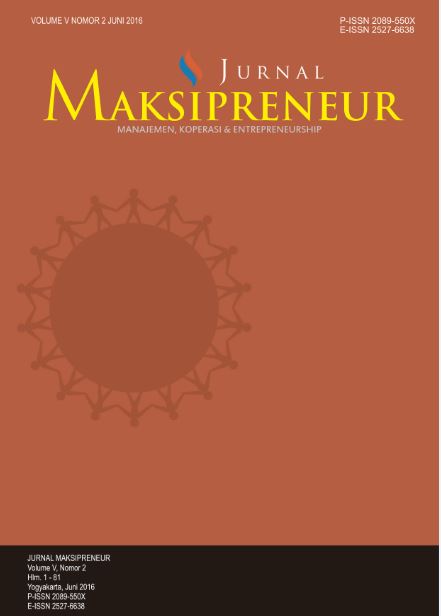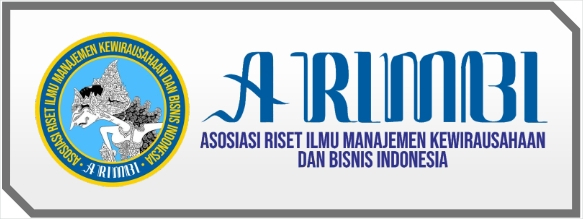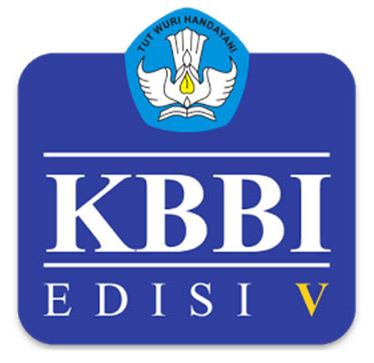Intention to Use E-wallet Dilihat dari Perceived Usefulness, Perceived Ease of Use, Perceived Security, dan Trust
DOI:
https://doi.org/10.30588/jmp.v11i2.916Keywords:
Intention to use, Perceived usefulness, Perceived ease of use, Perceived security, TrustAbstract
Currently, the lifestyle of modern society is changing, due to the support of increasingly sophisticated technology. Technology makes it easy for users to carry out various activities very easily. One form of this technology is the smartphone, it’s a multifunctional tool that can replace various products and functions in one hand. In addition to entertainment, smartphones are also used for work, and even make financial transactions very easily. However, risks can occur with the existence of these advanced technologies. Perceptions of the ease of use of technology and consumer confidence can reduce the risks faced. This study uses an e-wallet object for further analysis. The purpose of this study was to determine the factors that influence the intention to use the e-wallet. The sample of this study was young people, from 300 students who were determined by quota sampling technique, while the research instrument used a questionnaire that was tested for validity and reliability before data analysis. A multiple linear regression analysis methods was used to test the hypothesis proposed in this study. The results of this study indicate that perceived usefulness, perceived ease of use, and trust have a significant and positive effect on the intention to use the e-wallet, while perceived security has no significant effect.References
Ajzen, I. (1991). The Theory of Planned Behavior. Organizational Behavior and Human Decision Processes, 50(2), 179–211. https://doi.org/10.1016/0749-5978(91)90020-T.
Alam, M. M., Awawdeh, A. E., & Muhamad, A. I. B. (2021). Using E-wallet for Business Process Development: Challenges and Prospects in Malaysia. Business Process Management Journal, 27(4), 1142–1162. https://doi.org/10.1108/BPMJ-11-2020-0528.
Chandra, S. & Kumar, K.N. (2018). Exploring Factors Influencing Organizational Adoption of Augmented Reality in E-commerce: Empirical Analysis Using Technology-Organization-Environment Model. Journal of Electronic Commerce Research, 19(3), 237–265.
Chawla, D., & Joshi, H. (2019). Consumer Attitude and Intention to Adopt Mobile Wallet in India – An Empirical Study. The International Journal of Bank Marketing, 37(7), 1590–1618. https://doi.org/10.1108/IJBM-09-2018-0256.
Chawla, D., & Joshi, H. (2020). Role of Mediator in Examining the Influence of Antecedents of Mobile Wallet Adoption on Attitude and Intention. Global Business Review. https://doi.org/10.1177/0972150920924506.
Damghanian, H., Zarei, A., & Kojuri, M. A. S. (2016). Impact of Perceived Security on Trust, Perceived Risk, and Acceptance of Online Banking in Iran. Journal of Internet Commerce, 15(3), 214–238.
Davis, F. D. (1989). Perceived Usefulness, Perceived Ease of Use, and User Acceptance of Information Technology. MIS Quarterly, 13(3), 319–340. https://doi.org/10.2307/249008.
Davis, F. D., Bagozzi, R. P., & Warshaw, P. R. (1989). User Acceptance of Computer Technology: A Comparison of Two Theoretical Models. Management Science, 35(8), 982–1003.
Enck, W., Ongtang, M., & McDaniel, P. (2009). On Lightweight Mobile Phone Application Certification. Proceedings of the 16th ACM Conference on Computer and Communications Security, Chicago, Illinois, USA, November 9-13, 235–245. https://doi.org/10.1145/1653662.1653691.
Fishbein, M., & Ajzen, I. (2011). Predicting and Changing Behavior. New York, USA: Psychology Press, Taylor & Francis Group. https://doi.org/10.4324/9780203838020.
Gefen, D., & Straub, D. (2003). Managing User Trust in B2C e-Services. e-Service Journal, 2(2), 7–24. https://doi.org/10.2979/esj.2003.2.2.7.
Hamid, A. A., Razak, F. Z. A., Bakar, A. A., & Abdullah, W. S. W. (2016). The Effects of Perceived Usefulness and Perceived Ease of Use on Continuance Intention to Use E-Government. Procedia Economics and Finance, 35, 644–649. https://doi.org/10.1016/S2212-5671(16)00079-4.
Hoque, M. Z., & Alam, M. N. (2018). What Determines the Purchase Intention of Liquid Milk During a Food Security Crisis? The Role of Perceived Trust, Knowledge, and Risk. Sustainability, 10, 1–22. https://doi.org/10.3390/su10103722.
Hossain, M. M., & Prybutok, V. R. (2008). Consumer Acceptance of RFID Technology: An Exploratory Study. IEEE Transactions on Engineering Management, 55(2), 316¬–328. https://doi.org/10.1109/TEM.2008.919728.
Jogiyanto, H. M. (2007). Sistem Informasi Keperilakuan. Yogyakarta, Indonesia: Andi Offset.
Kazan, E., Tan, C-. W., Lim, E. T. K., Sørensen, C., & Damsgaard, J. (2018). Disentangling Digital Platform Competition: The Case of UK Mobile Payment Platforms. Journal of Management Information Systems, 35(1), 180–219. https://doi.org/10.1080/07421222.2018.1440772.
Kim, B., Choi, M., & Han, I. (2009). User Behaviors Toward Mobile Data Services: The Role of Perceived Fee and Prior Experience. Expert Systems with Applications, 36(4), 8528–8536. https://doi.org/10.1016/j.eswa.2008.10.063.
Kim, S. Y., Kim, J. U., & Park, S. C. (2017). The Effects of Perceived Value, Website Trust, and Hotel Trust on Online Hotel Booking Intention. Sustainability, 9, 1–14. https://doi.org/10.3390/su9122262.
Kumar, A., Adlakaha, A., & Mukherjee, K. (2018). The Effect of Perceived Security and Grievance Redressal on Continuance Intention to Use M-wallets in a Developing Country. International Journal of Bank Marketing, 36(7), 1170–1189. https://doi.org/10.1108/IJBM-04-2017-0077.
Lin, W-. R, Yang, F-. J., & Chang, Y-. H. (2020). The Impact of Risk Factors and Attitudes on Use Mobile Payment Intention. Journal of Accounting, Finance & Management Strategy, 15(1), 129–158.
Lwoga, E. T., & Lwoga, N. B. (2017). User Acceptance of Mobile Payment: The Effects of User-Centric Security, System Characteristics, and Gender. The Electronic Journal of Information Systems in Developing Countries, 81(3), 1–24.
Mathieson, K. (1991). Predicting User Intentions: Comparing the Technology Acceptance Model with the Theory of Planned Behavior. Information Systems Research, 2, 173–191.
Media Indonesia (2021). Lima Dompet Digital Paling Banyak Digunakan selama Kuartal I. Media Indonesia, 29 Maret. Diakses tanggal 15 Juli 2021 di https://mediaindonesia.com/ekonomi/394085/ lima-dompet-digital-paling-banyak-digunakan-selama-kuartal-i.
Meskaran, F., Ismail, Z., & Shanmugam, B. (2013). Online Purchase Intention: Effects of Trust and Security Perception. Australian Journal of Basic and Applied Sciences, 7(6), 307–315.
Patel, V. (2016). Use of Mobile Wallet Service by The Youth: A Study Based in Ahmedabad. ASBM Journal of Management, 9(2), 50–61.
Pavlou, P. A. (2001). Integrating Trust in Electronic Commerce with the Technology Acceptance Model: Model Development and Validation. Proceedings of the 7th Americas Conference on Information Systems, 816–882.
Sarmah, R., Dhiman, N., & Kanojia, H. (2021). Understanding Intentions and Actual Use of Mobile Wallets by Millennial: An Extended TAM Model Perspective. Journal of Indian Business Research, 13(3), 361–381. https://doi.org/10.1108/JIBR-06-2020-0214.
Thakur, R., & Srivastava, M. (2014). Adoption Readiness, Personal Innovativeness, Perceived Risk, and Usage Intention Across Customer Groups for Mobile Payment Services in India. Internet Research, 24(3), 369–392. https://doi.org/10.1108/IntR-12-2012-0244.
Waspada, I. (2012). Percepatan Adopsi Sistem Transaksi Teknologi Informasi untuk Meningkatkan Aksesibilitas Layanan Jasa Perbankan. Jurnal Keuangan dan Perbankan, 16(1), 122–131. https://doi.org/10.26905/jkdp.v16i1.1052.
Yang, M., Al Mamun, A., Mohiuddin, M., Nawi, N. C., & Zainol, N. R., (2021). Cashless Transactions: A Study on Intention and Adoption of e-Wallets. Sustainability, 13(2), 1–18. https://doi.org/10.3390/su13020831.
Yang, Q., Pang, C., Liu, L., Yen, D. C., & Tarn, J. M. (2015). Exploring Consumer Perceived Risk and Trust for Online Payments: An Empirical Study in China’s Younger Generation. Computers in Human Behavior, 50: 9–24. https://doi.org/10.1016/j.chb.2015.03.058.
Yousafzai, S. Y., Pallister, J. G., & Foxall, G. R. (2003). A Proposed Model of e-Trust for Electronic Banking. Technovation, 23, 847–860. https://doi.org/10.1016/S0166-4972(03)00130-5.
Rakyat Merdeka (2021). Jumlah Konsumen Dompet Digital Melonjak, Pengguna Butuh Jaminan Transaksi dan Simpanan. Rakyat Merdeka, 25 Juni. Diakses tanggal 15 Juli 2021 di https://rm.id/baca-berita/nasional/80885/jumlah-konsumen-dompet-digital-melonjak-pengguna-butuh-jaminan-transaksi-dan-simpanan.
Reddy, T. T. & Rao, B. M. (2019). The Moderating Effect of Gender on Continuance Intention Toward Mobile Wallet Services in India. Indian Journal of Marketing, 49(4), 48–62. https://doi.org/10.17010/ijom/2019/v49/i4/142976.
Roussou, I., Stiakakis, E., & Sifaleras, A. (2019). An Empirical Study on The Commercial Adoption of Digital Currencies. Information Systems and eBusiness Management, 17, 223–259. https://doi.org/10.1007/s10257-019-00426-7.
Zhou, T. (2011). An Empirical Examination of Initial Trust in Mobile Banking. Internet Research, 21(5), 527–540. https://doi.org/10.1108/10662241111176353.
Zhou, T. (2013). An Empirical Examination of Continuance Intention of Mobile Payment Services. Decision Support Systems, 54(2), 1085–1091. https://doi.org/10.1016/j.dss.2012.10.034.
Downloads
Additional Files
Published
How to Cite
Issue
Section
License
Authors who publish with Jurnal Maksipreneur agree to the following terms:
Authors retain copyright and grant the Jurnal Maksipreneur right of first publication with the work simultaneously licensed under a Creative Commons Attribution 4.0 International License that allows others to share (copy and redistribute the material in any medium or format) and adapt (remix, transform, and build upon the material) the work for any purpose, even commercially with an acknowledgment of the work's authorship and initial publication in Jurnal Maksipreneur.
Authors are able to enter into separate, additional contractual arrangements for the non-exclusive distribution of the journal's published version of the work (e.g., post it to an institutional repository or publish it in a book), with an acknowledgment of its initial publication in Jurnal Maksipreneur. Authors are permitted and encouraged to post their work online (e.g., in institutional repositories or on their website) prior to and during the submission process, as it can lead to productive exchanges, as well as earlier and greater citation of published work (See The Effect of Open Access).























